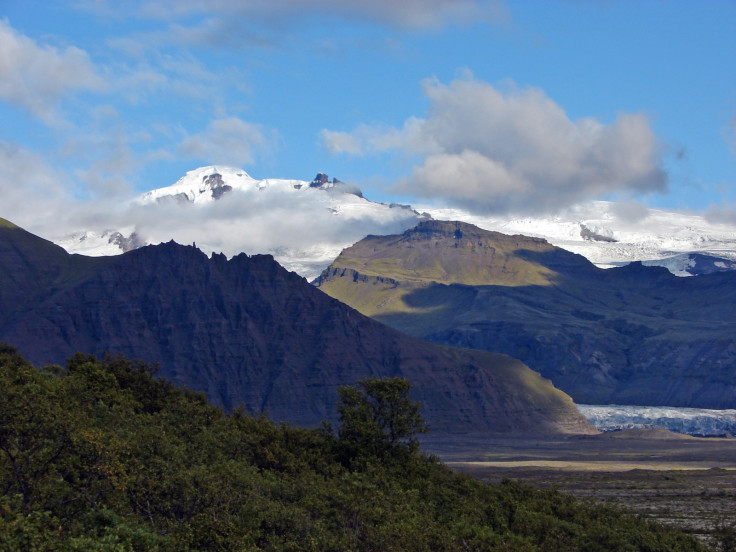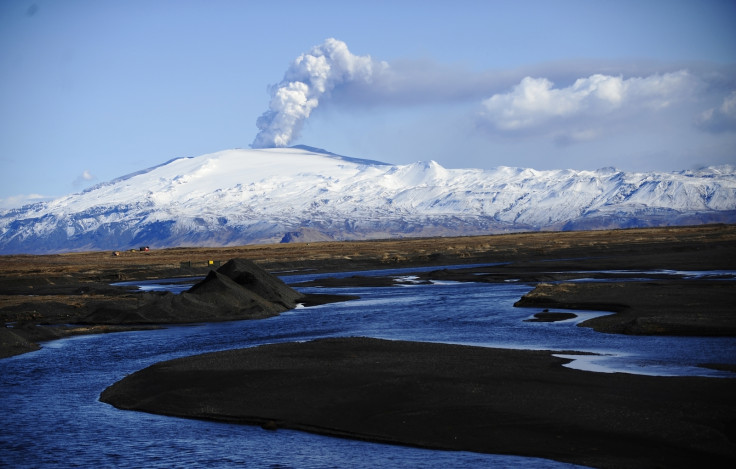Öræfajökull: Iceland's biggest volcano waking up after centuries raising fears of possible eruption
Scientists recently discovered the formation of a 1km-wide "ice cauldron" in the ice-cap of the volcano's caldera.

Iceland's largest and most deadly active volcano — Öræfajökull — appears to be waking up from its centuries-long slumber, raising fears of a possible eruption. Scientists recently detected an increased geothermal activity coming from the giant frozen volcano. Öræfajökull last erupted in 1727, in what is reportedly the second most deadly eruption in the history of Iceland.
The volcano is now closely being watched by Icelandic authorities and the Icelandic Civil Protection Agency has declared an uncertainty phase for the frozen volcano, Iceland Magazine reported.
The Icelandic Meteorological Office said that recent satellite images of the volcano revealed that a new 1Km-wide "ice cauldron" has formed within the volcano's caldera. Scientists also believe that the volcano's caldera has released geothermal water, which likely resulted in a section of the caldera to collapse. The geothermal water was spotted merging into the glacial river of the Kvíárjökull outlet-glacier, on the south-east end of the Öræfajökull glacier. A distinctive smell of sulphur has also been detected along with the release of the water.
"Apart from a stench of gas from the Kvíá river, there was no obvious sign of recent flooding," The Icelandic Meteorological Office said in a statement. "The ice cauldron that was reported on 17 November 2017 measures about 1 km in diameter and it is 15-20 m deep. While meltwater continues to drain from Kvíá, a large outburst flood seems unlikely.
New satellite images of Öræfajökull volcano shows that a new ice-cauldron has formed within the caldera. It seems that geothermal water has been slowly released from underneath the cauldron to the glacial river of the KvÃárjökull outlet-glacier. pic.twitter.com/LKnJlNxAEf
— Veðurstofa Ãslands (@Vedurstofan) November 17, 2017
"Although there has been significant geothermal activity in the Öræfajökull caldera, there are no signs of an imminent volcanic eruption. There is considerable uncertainty about how the situation will evolve. The Icelandic Meteorological Office continues to monitor the region around-the-clock via seismic observations."
Öræfajökull is believed to be one of the most powerful volcanos in Europe. A steam blast eruption in 1362 reportedly wiped out all inhabitants in up to 40 nearby farms. The eruption is believed to be the largest tephra eruptions ever experienced in the past 1,000 years, Iceland Magazine reported.
Bryndís Ýr Gísladóttir, the natural resource specialist at the Met Office, told Morgunbladid newspaper that a "yellow warning" has been issued to airlines "for security reasons because we do not really know much about Öræfajökull or how it behaves since it last visited 1727 and before 1362."
A possible eruption could reportedly affect two of Iceland's most popular tourist destinations, which are located in the foothills of the giant frozen volcano.























